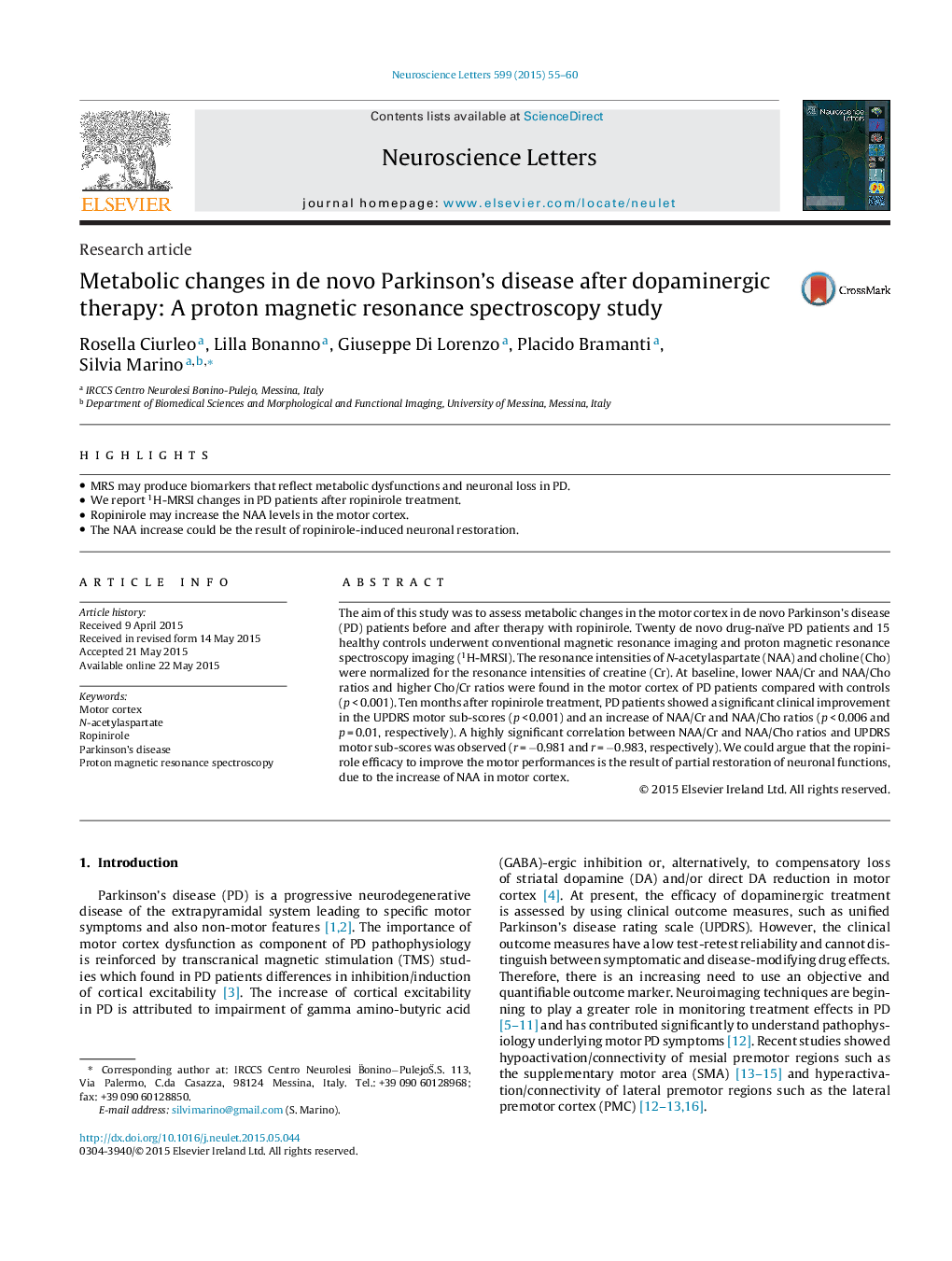| Article ID | Journal | Published Year | Pages | File Type |
|---|---|---|---|---|
| 4343430 | Neuroscience Letters | 2015 | 6 Pages |
•MRS may produce biomarkers that reflect metabolic dysfunctions and neuronal loss in PD.•We report 1H-MRSI changes in PD patients after ropinirole treatment.•Ropinirole may increase the NAA levels in the motor cortex.•The NAA increase could be the result of ropinirole-induced neuronal restoration.
The aim of this study was to assess metabolic changes in the motor cortex in de novo Parkinson’s disease (PD) patients before and after therapy with ropinirole. Twenty de novo drug-naïve PD patients and 15 healthy controls underwent conventional magnetic resonance imaging and proton magnetic resonance spectroscopy imaging (1H-MRSI). The resonance intensities of N-acetylaspartate (NAA) and choline (Cho) were normalized for the resonance intensities of creatine (Cr). At baseline, lower NAA/Cr and NAA/Cho ratios and higher Cho/Cr ratios were found in the motor cortex of PD patients compared with controls (p < 0.001). Ten months after ropinirole treatment, PD patients showed a significant clinical improvement in the UPDRS motor sub-scores (p < 0.001) and an increase of NAA/Cr and NAA/Cho ratios (p < 0.006 and p = 0.01, respectively). A highly significant correlation between NAA/Cr and NAA/Cho ratios and UPDRS motor sub-scores was observed (r = −0.981 and r = −0.983, respectively). We could argue that the ropinirole efficacy to improve the motor performances is the result of partial restoration of neuronal functions, due to the increase of NAA in motor cortex.
